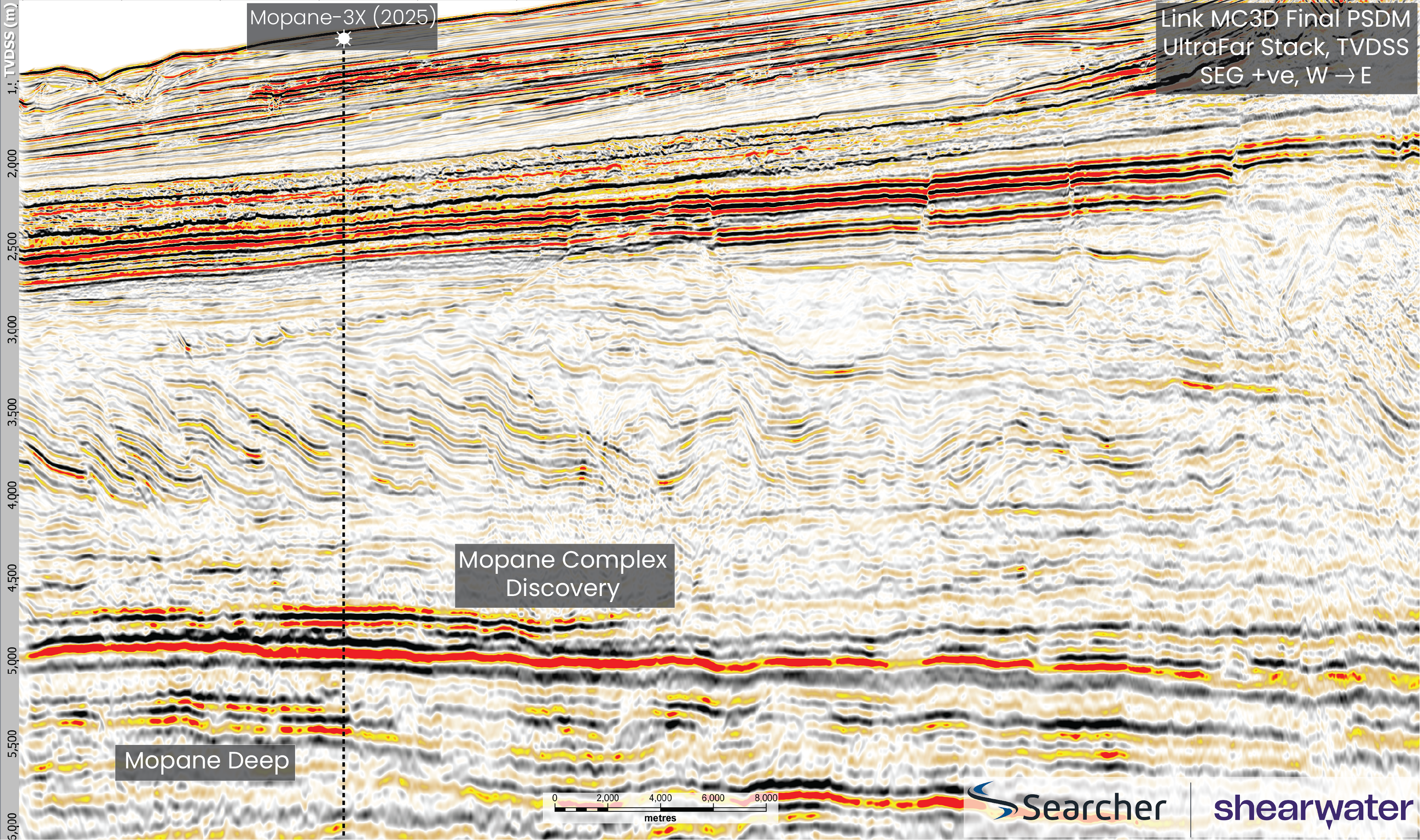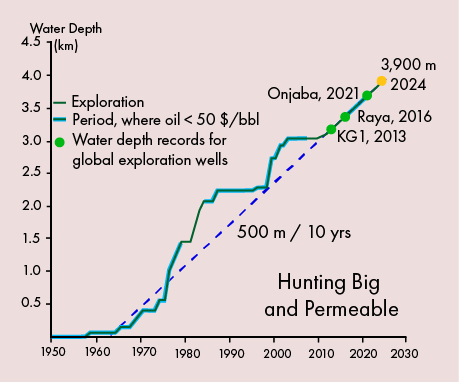New technologies for deepwater
So, where do you look for billions of barrels of oil and gas equivalent, after really smart and determined humans built a civilization out of looking really hard, everywhere they could reach for a hundred years? Not onshore and not in shallow water offshore either. The only place to look now is somewhere you couldn’t access before – the deepwater basin floors of the world’s passive margins
Our industry has recently developed a number of tools with specific applications in deepwater that will help us survive this challenge. Firstly, we all have the optional use of the most complicated machine in the universe – our human brains, which will provide the imagination and the curiosity to adapt to the new play environment in deepwater. It may be hip to augment this tool with thinking machines but the organics will lead the way.
There are some very clear exploration advantages to the geologies encountered in the deep and ultra-deep of passive margins. Every ocean plate will shallow as one moves from older to younger parts, i.e. further offshore from the base of slope. Sands that get to the basin floor are draped onto the crust and pinch out offshore; therefore, with time, the counter regional dip creates a zero-risk trapping configuration (Figure 1 and foldout). Prior to that, when the margins start to drift, they do so in narrow restricted basins ideal for depositing restricted marine source rocks directly onto the new crust. If above upwelling mantle, the rift is initially sub-areal, so flood basalts (and SDR’s) are generated; if above colder downwelling depleted mantle, the margin stretches rather than melts, creating a hyperextended margin or initial drift volcanism is submarine. The former is a “magma rich” margin where the basement nadirs (with the source rocks and basin floor fans) have a good chance of being loaded with enough sediment to generate oil. Such a play is the Venus-1x discovery of Namibia (Figure 1) – soon to be emulated both in the South African extension of the Orange basin and in the Pelotas basin (foldout) in south Brazil.

The “magma poor” margins (such as Gabon’s Southern basin, Espirito Santos in Brazil or Kwanza in Angola) are just as common and the same principles of source will apply – the exhumed mantle is submarine, and source rock and basin floor fans will still deposit on top of it (Figure 1). Where allochthonous salt basins form inboard – reservoir must come into the basin laterally (i.e. from the Congo in South Gabon, Kwanza and Espirito Santos) and / or post the deposition of the salt basin despite halokinesis (Kwanza). In some cases, the salt basins slide under gravity creating a canopy of salt out over the crustal transition (i.e. all the above mentioned basins) the play still exists below and outboard of the canopy, and has not been tested in the Atlantic with the possible exception of the Ondjaba-1 well drilled out-board of the allochthonous salt in Angola in 2022.

Our second suite of technologies is the constantly evolving seismic acquisition, processing and imaging technologies to see and derisk new plays. Regional scale 3Ds are more common, often made affordable by being multi-client in nature. Ten to twelve long offset 8 – 10 km streamers in wide-tow configuration 150 m apart captures the full scale of opportunities – and whether conventional or multi-component streamer, these data will reveal the subtle detail of the sedimentology as well and give justifiable confidence in drill-ready prospects. It is in seismic processing that the constant progress occurs on a rolling 10 year basis, where the arcane cutting edge becomes the affordable normal deliverable in this timeframe. Availability of compute, refinement of algorithm and demands of the consumer drive the constant turnover of capability, so that it’s unthinkable that a new seismic product will not be de-ghosted, SRME’d, FWI’d where possible and pre-stack processed through PSDM today. This is changing both what we see and how we use this data.

Concentrating processing on deducing the correct seismic velocity field lets us use the far angles better than we have ever been able to. Discoveries relying on ultra-far angles to show amplitude variation with offset where far offsets show little effect are becoming legion (Figure 2). Risk reduction by detecting increases in amplitude with angle or offset has long been thought to be essential, but modern seismic can also attack source presence and effectiveness by revealing reduced amplitudes with offset. This is a major addition to just being able to image the source rocks better with de-ghosted, denoised data stacked accurately.
Modern seismic is also changing the way we think about deepwater sedimentation. Hand in hand with the development of deepwater-clastic fields, the new seismic is changing our understanding of the influence and impact of hitherto cryptic contourite currents on deposition of turbidite deposits. The deepwater sedimentation world we thought we had conquered is receiving a new approach. The effect of contourites on sedimentation that we can see on modern seismic, are very hard to observe in core and logs – it’s a matter of scale, but we are learning right now that they can dramatically influence the architecture of clastic turbidite deposits on both slope and basin floor.
Our last key technology to win the day is “engineering”. So far, the engineers have never let explorers down, and over the last 70 years have steadily progressed in exploration drilling water depths from (almost 0 m to 3,600 m of water at a rate of ca 500 m per decade (Figure 3). This year a well may be drilled in 3,900 m of water (offshore Colombia) so that in ten years time it is perhaps unambitious to assume we will be drilling in 4,900 m of water.
It’s an exciting time to be a human. It’s also an exciting time to be an explorer as we transition from “easy” shallow water into exploring a part of the Earth that until recently was so inaccessible and is still being understood. We can marvel at the simplicity and elegance of this low-risk exploration play in deepwater – and hope that the counter regional dipping clastic fan is where the world will find the oil and gas it needs to fuel the transition into a better world.




